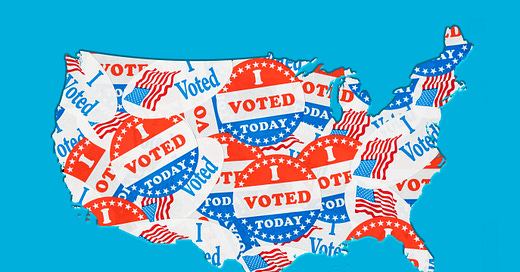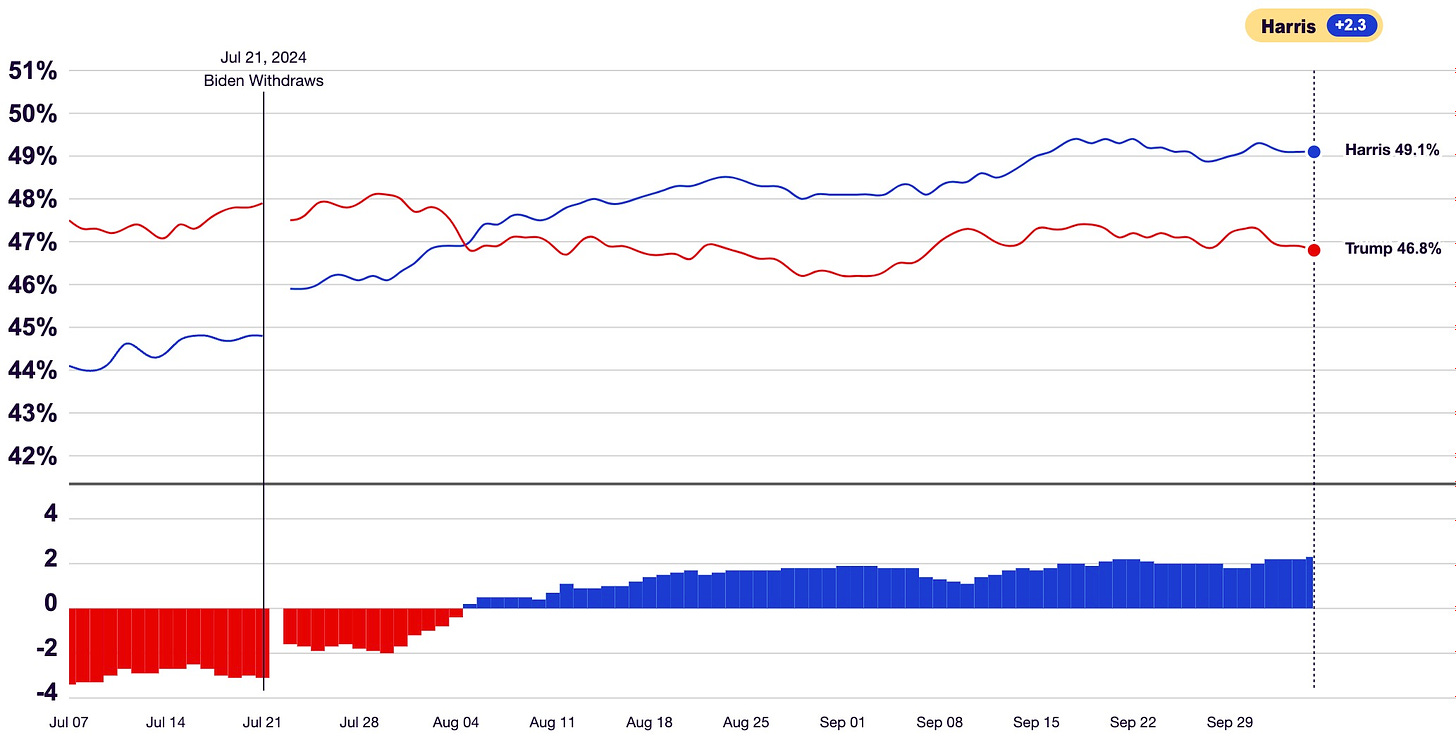A Grand Unified Theory of Why the Trump-Harris Polls Might Be Wrong
The VP is way more popular, congressional Democrats are rising, and . . . the Harris-Trump numbers are stuck at +2?
Big news: Next week we’re doing a Bulwark Live tour.
Me, Sarah, Tim, and the gang will do shows in Philly (Thursday, 10/17), Pittsburgh, (Friday, 10/18), and Detroit Rock City (Saturday, 10/19).
And:
Detroit will be coming online soon. You can bookmark TheBulwark.com/events if you want, but I’ll flag it for you when they go live.
Some #RealTalk: These events aren’t moneymakers for us. We do them because we love you guys and because this community is real. The meetups are a way to refill the well—for all of us.
Come and hang out. The only way through is together.
1. Tension
I’m going to tell you two stories about the current polling landscape. These stories aren’t fully incompatible with one another, but they are in tension. And that tension creates a mystery.
The first story is about the Trump-Harris campaign.
We now have an idea of what the steady-state dynamic in this race looks like: It’s Harris +2.
We’ve been at more-or-less Harris +2 since August 20. During that period we’ve had a ton of exogenous events: jobs reports, an interest rate cut, ramp-up in Israel-Hezbollah, two debates, more Trump scandals than I can remember. Despite everything, 2 points is about where we stayed.
This stability suggests that Harris +2 is the natural balance point unless/until late-deciding voters move in the final two weeks. If (or when) that happens, I would tentatively expect them to break for Harris, since she’s the functional insurgent.
But what I want you to focus on is the extent to which this race has been locked in place for a month and a half. Because as good a campaign as Harris has run—and I think she’s run an excellent campaign—she’s only gained 3 total points since she entered the race in late July. She went from 46 percent to 49 percent.
Which leads us to the second story: During the same period, all of the other numbers for Harris specifically and Democrats generally have been fantastic.
Let’s start with Harris herself. On July 20, her net favorability was -16. Today it’s +0.8. So her favorability jumped 17 points while her general election number went up . . . 3 points. Okay. Not quite sure how that works.
Now let’s look at the generic congressional ballot. On July 21, Republicans held a +0.6 advantage. Today, Democrats are +3, for a 4-point swing.
We’ve also seen congressional numbers moving in the ratings changes issued by the lovable nerds at Cook. For instance:
Since September 5, Cook moved the projections of 12 races towards Democrats and only one towards Republicans. That’s a lot.
And over the last six weeks, Cook shifted three Senate races towards Democrats (Nebraska, Texas, and Nevada) and one toward Republicans (Montana). Now maybe Republicans wind up winning all four of those seats—that would not be an outlier.
But the point is that the market-makers at Cook are seeing movement towards Democrats across the board. In House and Senate races. In Iowa and Illinois and Texas and Nevada. The Cook team saw that movement even while Harris’s margin against Trump remained locked in at +2.
And that’s the story with every piece of data outside the top line Trump-Harris number.1
Down-ballot Democrats are trending upwards. Harris’s favorables moved upwards. The economic news has been—literally without exception—good.
And through all of that, the Harris-Trump margin stayed stuck at +2.
How do you explain that?
I have some theories.






